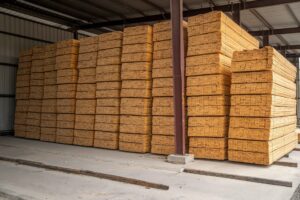In the world of hiking and trekking, the right gear can make a world of difference. Among the most underrated yet incredibly effective tools is the bamboo walking stick. This traditional companion has served nature lovers, rural travelers, and seasoned mountaineers for centuries. Lightweight, sturdy, and sustainable, bamboo walking sticks are more than just trekking aids—they’re a blend of nature, utility, and culture.
In this blog, we explore the unique benefits of bamboo walking sticks, why they are gaining popularity among modern adventurers, and how to choose and care for one.
1. What Makes Bamboo an Ideal Material for Walking Sticks?
Naturally Strong & Lightweight
Bamboo has an excellent strength-to-weight ratio, making it strong enough to support body weight and rough terrain while remaining ultra-light to carry.
Shock Absorbent
Unlike metal sticks that can feel rigid, bamboo has a slight natural flex that absorbs shock, reducing strain on knees and ankles.
Durable & Weather-Resistant
Properly treated bamboo resists moisture, heat, and wear, making it a reliable companion across all seasons and terrains.
2. Health & Hiking Benefits of Bamboo Walking Sticks
Improved Balance and Stability
Helps maintain balance on uneven, rocky, or slippery trails.
Provides extra support when crossing streams or climbing slopes.
Reduces Joint Pressure
Offloads weight from knees and hips, especially during descents.
Minimizes muscle fatigue during long hikes.
Enhances Cardiovascular Endurance
When used properly, bamboo sticks engage the upper body, improving posture and lung capacity through rhythmic arm movements.
Promotes Natural Walking Rhythm
Acts like a metronome, encouraging a steady walking pace, which is ideal for long treks or altitude climbs.
3. Eco-Friendly & Sustainable Choice
Bamboo is one of the fastest-growing plants in the world. It:
Requires no pesticides or synthetic fertilizers
Grows with minimal water
Is 100% biodegradable
By choosing a bamboo walking stick over synthetic poles, you’re supporting a sustainable lifestyle and reducing your ecological footprint.
4. Cultural Significance in India
In rural India, bamboo walking sticks are not just trekking tools—they are:
Symbols of wisdom and support among elders
Used in Silambam, an ancient martial art from Tamil Nadu
Seen in pilgrimages and hill temple visits, like Vaishno Devi or Sabarimala
These sticks carry the spirit of tradition, resilience, and connection to nature.
5. How to Choose the Right Bamboo Walking Stick
Height
The top of the stick should align with your wrist when your arm is at your side.
Grip & Handle
Choose a stick with a natural bend or custom-carved handle for comfort.
Some may come with leather straps or rubber grips for added support.
Base Tip
A rubber foot can provide better grip on paved paths.
For rugged terrain, a metal-tipped end may be added for extra stability.
Weight
Should be light enough to swing comfortably but solid enough to support weight.
6. Maintenance & Care Tips
Clean after use, especially if exposed to mud or water.
Store in a dry, shaded area to prevent cracking.
Oil the bamboo occasionally with coconut or linseed oil to maintain shine and flexibility.
Inspect for splits or insect activity, especially if storing long-term.
7. DIY: Make Your Own Bamboo Walking Stick
Want to craft a bamboo walking stick yourself? Here’s a quick guide:
Select a mature bamboo stalk about 1.5 meters long.
Remove leaves, branches, and outer sheaths.
Sand it smooth using fine-grit sandpaper.
Treat it with natural oil or polish.
Add a rubber or metal cap to the bottom.
(Optional) Carve your name or design for personalization.
8. Conclusion: Walk the Natural Way
Whether you’re hiking the Western Ghats, trekking through the Himalayas, or exploring forest trails, a bamboo walking stick can be your most trusted and eco-conscious companion. It connects you to the Earth, supports your journey, and reflects a lifestyle rooted in simplicity and sustainability.






